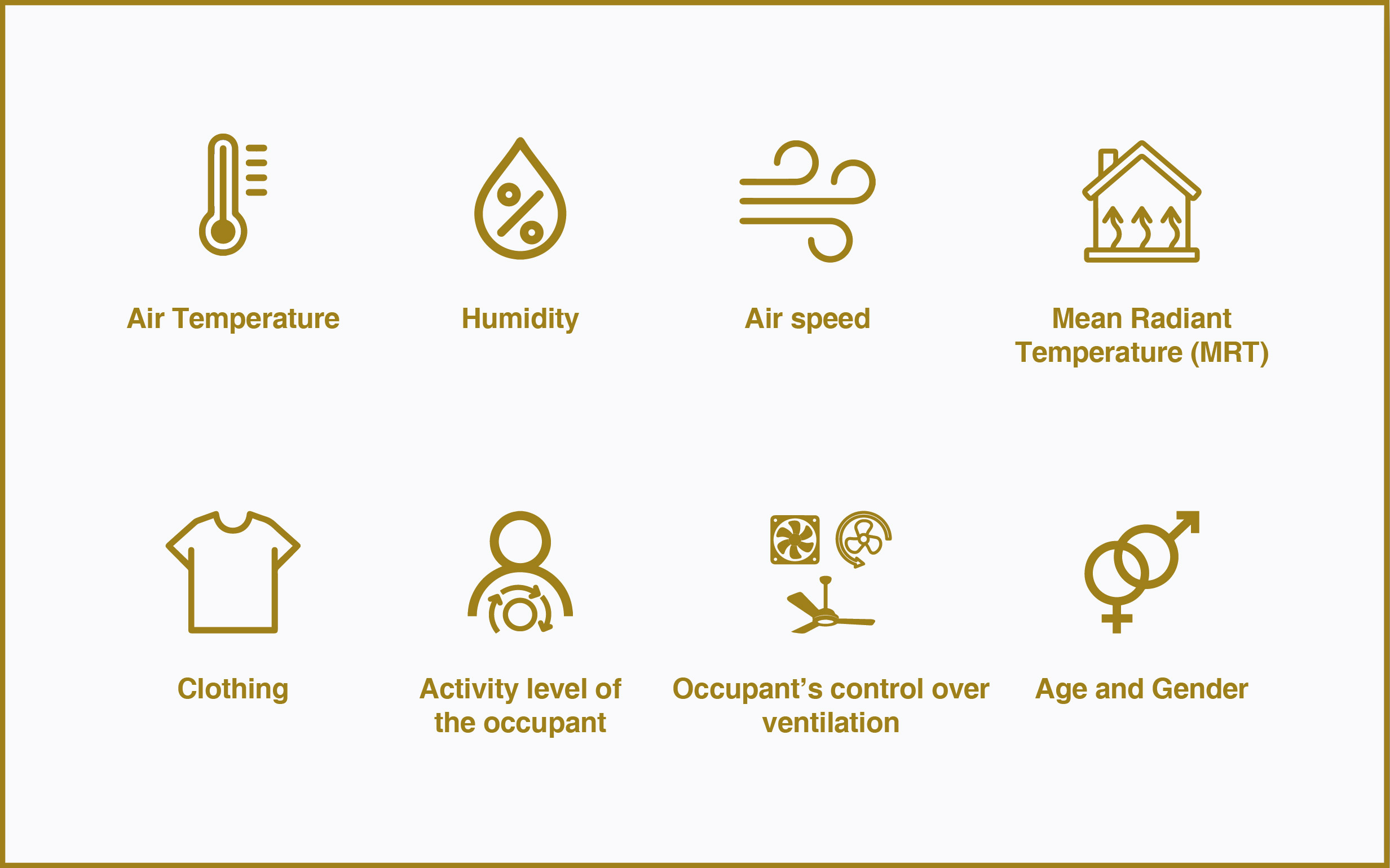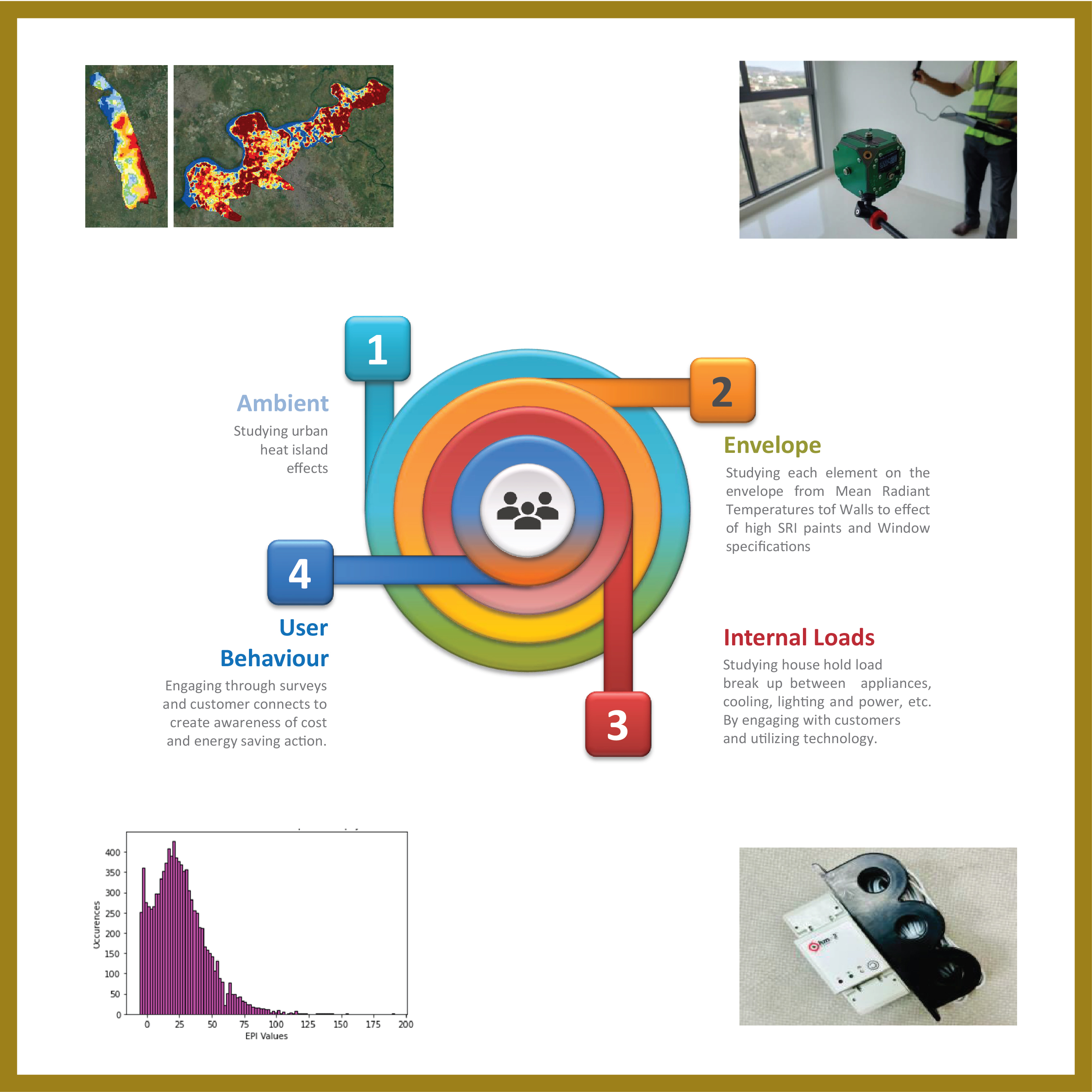

By - Aun Abdullah, Lodha & Tarun Garg, RMI India Foundation
Home has been a shelter for humans for ages- providing physical and emotional security. A home gives a feeling of comfort, identity and empowerment to an individual or a family. Housing acts as an engine of economic growth, and it has become critical in the aftermath of the coronavirus pandemic from a safety and health perspective. Focusing on thermal comfort in homes, the ubiquitous use of air conditioning in residential buildings is often positioned to be the only solution to achieve thermal comfort, despite its energy intensity and climate impact.1 However, often missing from the public conversation on comfort is the role of passive design, where the heat loads can be reduced and thermal comfort achieved by:
The term “thermal comfort” itself also demands a more nuanced understanding. It is subjective and perceived differently by different individuals, particularly in a diverse climate and society such as India. Adaptive thermal comfort takes a more holistic design approach across a broader set of comfort factors2 :

Contrary to some simplistic interpretations, comfort is not governed by temperature and humidity alone, and the human body can adapt and feel comfortable well beyond 24 degrees Celsius. Air movement and radiant temperature (including surface temperatures in space and solar gain through windows) are additional factors that can be manipulated through better design to achieve passive comfort. It also, crucially, depends on the historical and cultural experiences of the subjects and their ability to control their environment. This is particularly relevant in India. As per the research conducted at CEPT University, it was found that 80% of residential occupants experienced a neutral thermal sensation in the indoor operative range of 16.3–35◦C in response to a 5.5–33◦C variation in the 30-day outdoor running mean temperature.3
Reducing our reliance on air conditioning is not a loss or giving up on comfort, says Dr Gail Brager of the University of California at Berkeley. Among many achievements, Dr Brager led the development of adaptive thermal comfort into ASHRAE Standard 55, codifying these real experiential phenomena into international building design practices. Dr Lisa Heschong, in her book Thermal Delight in Architecture, argues that we should think about our perception of temperature as a sense. Like any other sense, temperature can cause discomfort, but it can also give us a lot of pleasure — the feeling of a warm fire in the winter or a cool breeze on a hot summer night. But these experiences require change — they don’t happen in a thermally neutral environment. Researchers from Princeton University, the National University
of Singapore and elsewhere are elevating the underappreciated potential for comfort through air movement and radiant cooling, developing design resources,4 radiant cooling devices for tropical climates5 and improved testing tools.6
This advanced understanding of thermal comfort has also been codified in India. The SP-41 standard provides a protocol for assessing comfort under the full factors, including wet bulb temperature, globe temperature and air speed.7 As per the Indian Model for Adaptive Thermal Comfort- Residential buildings4 (IMAC-R), 80% of the Indian residential occupants experienced a neutral thermal sensation in the indoor operative range of 16.3–35 degree Celsius in response to a 5.5–33-degree Celsius variation in the 30-day outdoor running mean temperature. The adaptive thermal comfort for residential consumers of Mumbai lies in the range of {24.2,33.8} degrees Celsius with 80% acceptability.
Understanding and designing the full range of comfort conditions— not just air temperature— passive or nearly-passive comfort is achievable in buildings during most of India’s outdoor climate conditions.
Under the net zero urban accelerator launched by Lodha in partnership with RMI India Foundation, Lodha has set a goal of providing thermal comfort to a million people with minimal need for air conditioning, thereby expanding comfort access to a broader set of customers. To achieve the desired goal, various passive strategies such as shading, efficient glass and building materials, high SRI paint, radiant cooling, solar chimney and low energy cooling technologies such as ceiling fans have been identified, and various experiments to establish the impact of identified interventions on thermal comfort and the energy consumption is currently underway. Here we are decoding all the layers that define thermal comfort, as shown in the diagram below:

At Palava City, through the Lodha Net Zero Accelerator, we are putting this advanced theory into practice, setting scientific criteria for thermal comfort, and engaging residents on adaptive thermal comfort. By scientifically demonstrating the efficacy of these approaches in creating affordable thermal comfort and delight for a million people, Palava will serve as a leading model and reference point, propagating LiFE solutions to a billion people across India and beyond.
1https://www.bloomberg.com/news/features/2023-05-17/air-conditioners-save-lives-in-india-heat-waves-but-worsen-global-warming
2Contextualizing adaptive comfort behavior within low income housing of Mumbai, India - Jeetika Malik et al
3https://www.sciencedirect.com/science/article/pii/S0360132322004231
4http://www.comfortch.art/
5https://www.tandfonline.com/eprint/CCYCIJKUCAY4GI9JNN42/full?target=10.1080/09613218.2020.1847025
6https://www.chaosense.com/
7SP-41 (Handbook on Functional requirement of buildings) Part 1: Climatology, Section 2.3- Indices of thermal comfort